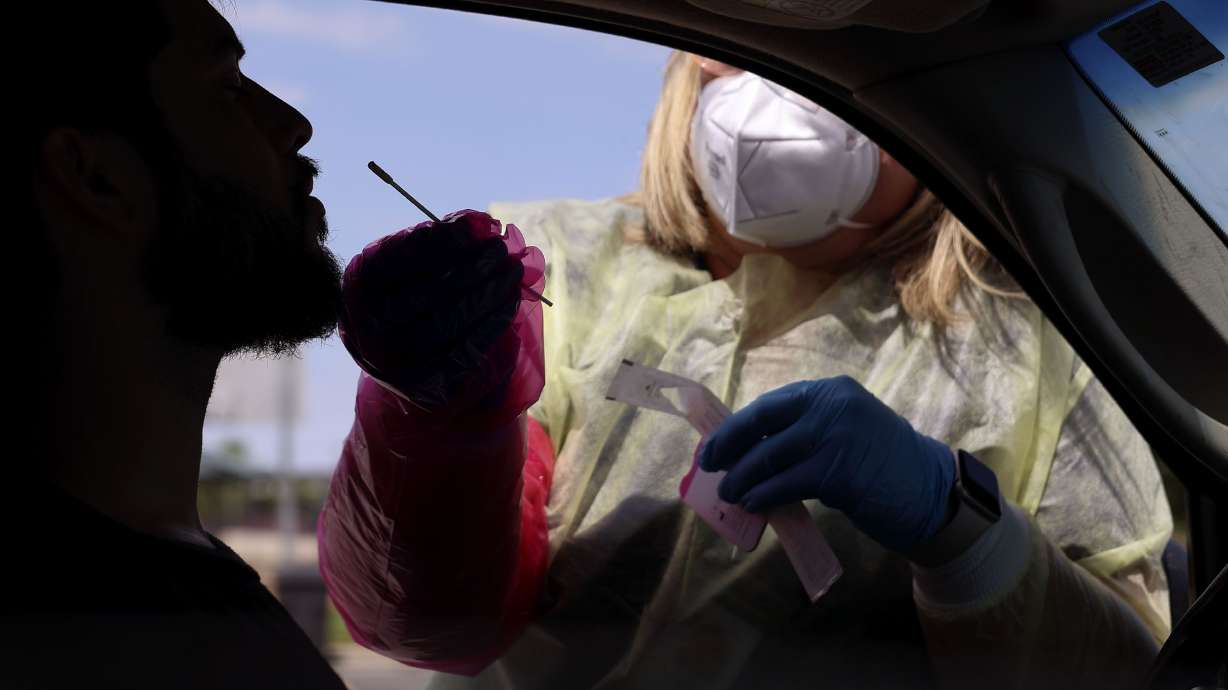Estimated read time: 4-5 minutes
This archived news story is available only for your personal, non-commercial use. Information in the story may be outdated or superseded by additional information. Reading or replaying the story in its archived form does not constitute a republication of the story.
SALT LAKE CITY — Could the latest version of COVID-19 cause a repeat of last winter's huge surge in COVID-19 cases?
It's possible, Kelly Oakeson, chief scientist for next-generation sequencing and bioinformatics for the Utah Department of Health and Human Services, told the Deseret News.
"We could be in for a wild ride," Oakeson said, if the omicron subvariant known to scientists as CH.1.1 and also being called orthrus after the two-headed dog of Greek myths, is able to take hold.
"We've said that before with other variants and they didn't take off. But this one does seem to have a pretty nasty mutational constellation spectrum that looks like it evades neutralizing antibodies pretty effectively," he said.
How effectively? Well, even people who have COVID-19 antibodies from a previous infection or vaccination still have pretty much zero protection against orthrus, Oakeson said, adding it also does a "really good job" of binding to cellular receptors.
'Hard to say right now'
Those two attributes mean the latest version of the omicron variant that sent COVID-19 cases soaring to record levels just over a year ago could spark another huge surge. Oakeson said it's not yet known whether CH.1.1 infections are more severe.
"It's still kind of early on with this," he said, adding, "It's hard to say right now that it's going to be more severe." But even if the severity turns out to be similar to previous versions of omicron, orthrus could still spell trouble.
"What we don't want to see is like we had with the original omicron variant, that huge spike in cases that then relates to a huge number of people in the hospital and a huge number of deaths," the chief scientist said. "We don't want to see that again."
So far, orthrus is believed to account for about 1.3% of U.S. COVID-19 cases and slightly more, some 1.5%, in the region that includes Utah, according to the latest estimates from the Centers for Disease Control and Prevention.
'It's circulating'
Orthus was first detected in Utah in a positive COVID-19 test from late last November, Oakeson said, noting genome sequencing by the state lab has identified the subvariant in a total of 34 tests collected in the state through mid-January.
"It's here in Utah. It's circulating," he said, and likely undercounted since the state lab relies on samples of COVID-19 tests taken from people who've sought medical care rather than from now-defunct mass testing sites.
For now, Oakeson said orthrus is causing only a small percentage of cases, as the CDC data indicates.
The omicron subvariant, said to have emerged in Southeast Asia in November 2022, is responsible for about a quarter of the COVID-19 cases in the U.K. and New Zealand, MedPage Today reported last week, citing a new study.
The medical news site also said orthrus has the same mutation as the more deadly delta variant that turned Utah and the Mountain West into the nation's COVID-19 hotspot in November 2021, also seen in the highly transmissible BA.4 and BA.5 omicron subvariants.
The BA.4 and BA.5 subvariants, targeted in the updated COVID-19 booster shots, were replaced this winter as the country's dominant strain, most recently by XBB.1.5. Also called Kraken, XBB.1.5 is now estimated by the CDC to cause nearly three-quarters of all cases.
Oakeson said even though orthrus can evade the COVID-19 vaccine, there's no reason to believe the shots won't still lessen the severity of an infection, just as they do for other versions of the virus.
'Things we don't want'
"It might help keep you out of the hospital," he said, ticking off the familiar list of recommendations to avoid COVID-19, including staying up-to-date on vaccinations, wearing a mask inside crowded places, social distancing and washing hands frequently.
Those same precautions should be taken, Oakeson said, "if you're really worried about getting infected, which I think people should be — there's still all of the long COVID symptoms and things which we don't fully understand yet."
Just how much damage orthrus will do is also unclear.
"It's not doomsday. It's not the end of the world," Oakeson said. "But we're potentially going to see more sick people. And more sick people means more hospitalizations. It means more deaths. It means all of those things that we don't want."










